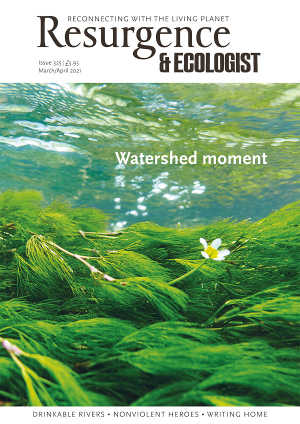“What a deep joy I think, to spend one’s life trying to find new threads to connect us to the world, new ways of speaking with its secret corners, new points and moments of connection.” So writes Alice Tarbuck, scholar and witch. This passage only comes at the end of A Spell in the Wild, but it’s a beautiful summation of the joys of her craft.
Admirably, the book is accessible not only to those already enchanted by notions of magic, but also to all other comers. Part of this is down to the academic rigour Tarbuck brings to her subject (though she is never dry or dull), and her philosophical approach, allied with her skill and clarity as a writer. It is an exceptionally thoughtful memoir and a sensitive, discerning exploration of many strands of witchcraft, past and present. As a starting point, she walks us through the months of the year as a way of sharing the “curious magic of the world, the way it shimmers and changes if you walk through it as a witch, with your eyes open”.
Tarbuck is a forager and a maker, and Nature lovers will warm to the passages where she describes her fondness for filling her pockets with fallen leaves and berries and herbs on her wanderings. These can happen in woods, in scrubby back alleys, or for her, once, memorably, at a midsummer wedding. The wild is her muse, the source of much of her magic, and an extension of her very self. But this book isn’t just about Nature cures. We also learn about the practice of honouring the dead, sex magic, fortune telling and divination. We learn too about witches and their history of protest.
A witch, she explains, is practised in the art of making things happen, of altering herself and the world through the exercise of will and attention. Though this is not a book of spells, or ‘grimoire’ in witchy parlance, at the end of each chapter, rather deliciously for those wanting to have a go, is a spell or magical recipe of some sort. Among them are a weather spell, a fever cure, a charm for money, and a spell for getting rid of something – my favourite, as all you need is an egg.
What drew me deeper into the book and heightened my admiration for Tarbuck was the awareness she brings to issues relating to social justice, to colonisation, and to the fetishising of ancient landscapes, within a British context. Inclusion comes naturally to her. Not everyone can practise magic in idealised surroundings, and nor do they need to. And not everyone, she stresses, is able to be ‘out’ about their practice. “There are some people for whom, culturally, that would be extremely difficult,” she explains.
Magic, she goes on to say, “can happen in prison cells, it can take place in portaloos, it doesn’t require ancient stones or extraordinary labyrinths to walk around”. Later she adds: “We work with plastic, with processed water, with air miles, with deforestation and communal bins that stink all summer with that sweet, cloying rot. Thinking magically is also, always, thinking ecologically, thinking about the great wide world that we inhabit.” Ultimately, she writes, witchcraft is a way of understanding the world, of realising it is not separate from us. “We are in the world and the world is in us.”
Wondrous, insightful and steadying, A Spell in the Wild is the perfect companion for the strange times in which we find ourselves.







